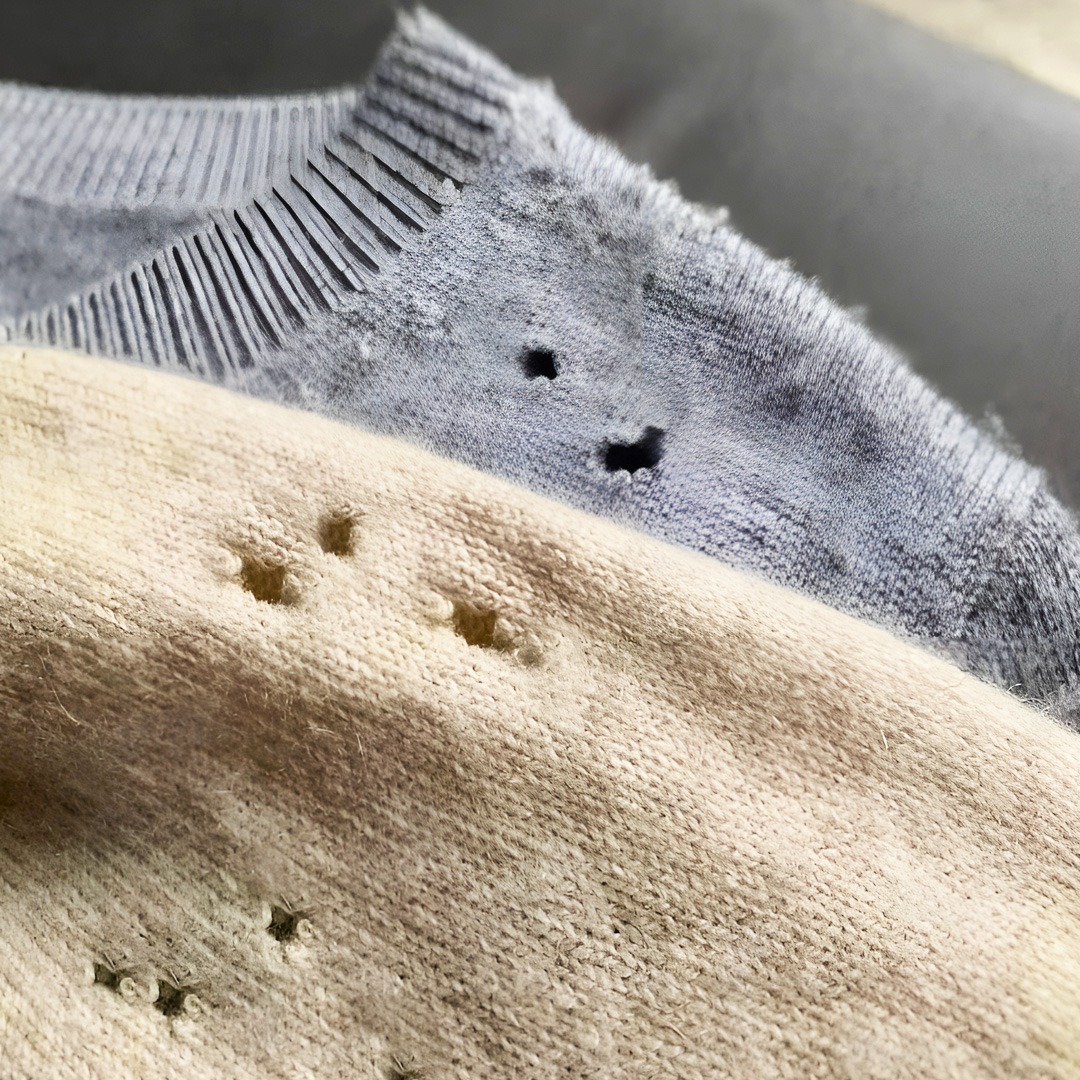ADVERTISEMENT
### **3. Long, Narrow Holes: A Sign of Sharp Objects or Improper Storage**
If you discover long, narrow holes that seem like they were caused by something sharp—perhaps a snag on a nail or a tear caused by a zipper or hook—this is likely the result of **sharp objects** or **improper storage**. For instance, storing clothes in places where they’re frequently jostled or coming into contact with rough or sharp surfaces can cause this type of damage.
#### **Sharp Object Damage**
If you’ve ever accidentally caught your shirt on a nail, rough edge, or sharp corner, you know how easily fabrics can tear or develop holes. Materials like silk, thin cotton, or synthetics can be especially vulnerable to sharp objects.
#### **Improper Storage**
Holes caused by improper storage can occur when clothes are stored in overcrowded areas. Zippers, hooks, and other fasteners on clothing can cause long, narrow holes in other garments if they are not stored properly or neatly.
#### **How to Prevent Sharp Object and Storage-Related Holes**
To avoid these types of holes, take the following precautions:
– **Store clothes properly**: Avoid overstuffing drawers or closets. Hanging or folding clothes neatly reduces the likelihood of them getting snagged on rough surfaces or fasteners.
– **Be mindful of sharp objects**: Always check your clothes for sharp items in your pockets (like pens, keys, or broken zippers) before washing or storing them.
– **Use garment bags**: If you have delicate clothes, like silk or lace, use garment bags when storing or washing them to avoid unnecessary wear and tear.
—
### **4. The Classic Button or Seam Hole: Poor Stitching or Manufacturing Defects**
If the holes you find in your clothes are located around the buttons or seams, it could be a sign of **poor stitching** or a **manufacturing defect**. Clothing that’s poorly made or stitched too tightly around these areas can develop holes after just a few wears.
#### **Why Do Button and Seam Holes Occur?**
Buttonholes or seams can tear or develop holes when the stitching isn’t strong enough or if the garment is subjected to excess strain. For example, if you regularly tug on a shirt or pants that are too tight, the pressure can cause the stitches to break or the fabric to tear around the buttons or seams.
#### **How to Prevent Button or Seam Holes**
To reduce the chances of these types of holes, try the following:
– **Inspect your clothes for manufacturing defects**: Always check the stitching around buttons, zippers, and seams when buying clothes. Poor stitching should be addressed immediately before wearing the garment.
– **Avoid excessive strain on clothing**: Don’t over-stretch or pull on garments when dressing or undressing, as this can place undue strain on the stitching and seams.
—
### **5. Mysterious Holes: Fabric Defects or Wear and Tear Over Time**
Sometimes, holes can appear mysteriously, without an obvious cause. These can sometimes be the result of **fabric defects** or general wear and tear over time. Low-quality fabrics or older garments may experience issues with degradation, leading to small holes appearing unexpectedly.
#### **How to Handle Wear and Tear**
– **Quality matters**: Invest in well-made clothing from reputable brands that prioritize fabric quality and stitching.
– **Proper care**: Always follow the care instructions on your clothing tags. Washing clothes in hot water or putting them in the dryer too often can accelerate wear and tear, causing holes to develop more quickly.
—
### **Conclusion: Understanding the Cause of Holes in Your Clothes**
Finding holes in your clothes can be frustrating, but understanding what they mean can help you take steps to prevent future damage and preserve your favorite garments. Whether it’s moth damage, friction, sharp objects, or manufacturing defects, each hole has a story to tell. By learning how to identify the causes of holes, you can be more proactive about caring for your clothes, ensuring they last longer and remain in good condition.
If you do find holes in your clothes, don’t despair. Many of these issues can be fixed with a bit of creativity and effort, from patching up holes to taking steps to prevent future damage. With the right knowledge and care, your wardrobe can remain intact and ready to wear for years to come.
